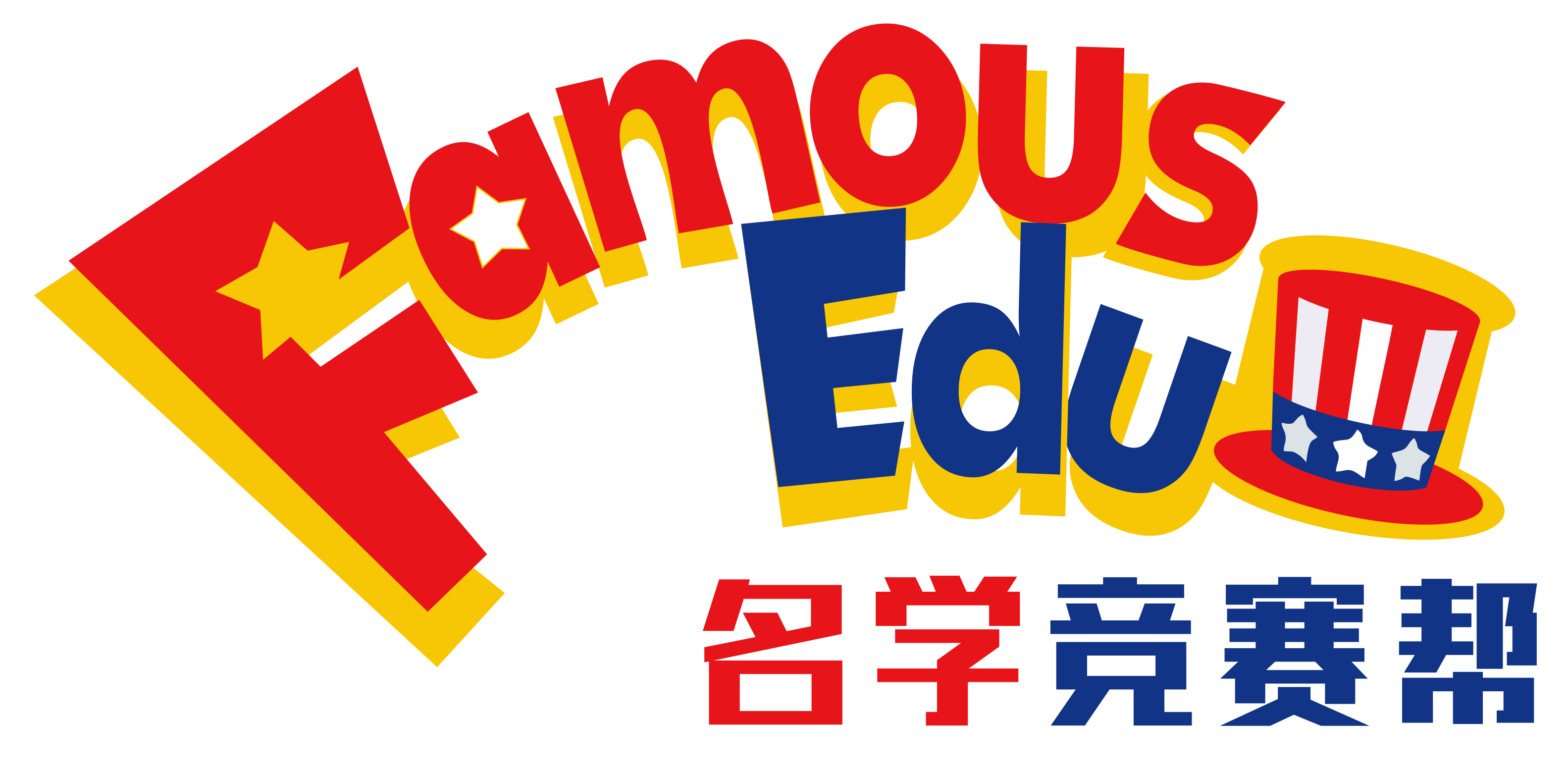AMC8 2011年真题
2011 AMC 8 Problems
Problem 1
Margie bought 3 apples at a cost of 50 cents per apple. She paid with a 5-dollar bill. How much change did Margie recieve?
(A) $1.50 (B) $2.00 (C) $2.50 (D) $3.00 (E) $3.50
Problem 2
Karl's rectangular vegetable garden is 20 feet by 45 feet, and Makenna's is 25 feet by 40 feet. Whose garden is larger in area?
(A) Karl's garden is larger by 100 square feet.
(B) Karl's garden is larger by 25 square feet.
(C) The gardens are the same size.
(D) Makenna's garden is larger by 25 square feet.
(E) Makenna's garden is larger by 100 square feet.
(A) 8:17 (B) 25:49 (C) 36:25 (D) 32:17 (E) 36:17
(A) median < mean < mode (B) mean < mode < median
(C) mean < median < mode (D) median < mode < mean
What time was it 2011 minutes after midnight on January 1, 2011?
(A) January 1 at 9:31 PM (B) January 1 at 11:51 PM
(C) January 2 at 3:11 AM (D) January 2 at 9:31 AM
(A) 20 (B) 25 (C) 45 (D) 306 (E) 351
(A) 15 (B) 18 (C) 20 (D) 24 (E) 25
How many digits are in the product 45 ∙ 510 ?
(A) 8 (B) 9 (C) 10 (D) 11 (E) 12
How many rectangles are in this figure?
(A) 8 (B) 9 (C) 10 (D) 11 (E) 12
What is the tens digit of 72011?
(A) 24 (B) 48 (C) 60 (D) 84 (E) 108
In how many ways can 10001 be written as the sum of two primes?

![[asy] filldraw((0,0)--(5,0)--(5,5)--(0,5)--cycle,white,black); filldraw((1,1)--(4,1)--(4,4)--(1,4)--cycle,mediumgray,black); filldraw((2,2)--(3,2)--(3,3)--(2,3)--cycle,white,black); draw((4,0)--(4,5)); draw((3,0)--(3,5)); draw((2,0)--(2,5)); draw((1,0)--(1,5)); draw((0,4)--(5,4)); draw((0,3)--(5,3)); draw((0,2)--(5,2)); draw((0,1)--(5,1)); [/asy]](http://nwzimg.wezhan.cn/contents/sitefiles2050/10251729/images/43994480.png?)
![[asy] import graph; size(7.01cm); real lsf=0.5; pen dps=linewidth(0.7)+fontsize(10); defaultpen(dps); pen ds=black; real xmin=-0.42,xmax=14.59,ymin=-10.08,ymax=5.26; pair A=(0,0), B=(4,0), C=(0,4), D=(4,4), F=(2,0), G=(3,0), H=(1,4), I=(2,4), J=(3,4), K=(0,-2), L=(4,-2), M=(0,-6), O=(0,-4), P=(4,-4), Q=(2,-2), R=(2,-6), T=(6,4), U=(10,0), V=(10,4), Z=(10,2), A_1=(8,4), B_1=(8,0), C_1=(6,-2), D_1=(10,-2), E_1=(6,-6), F_1=(10,-6), G_1=(6,-4), H_1=(10,-4), I_1=(8,-2), J_1=(8,-6), K_1=(8,-4); draw(C--H--(1,0)--A--cycle,linewidth(1.6)); draw(M--O--Q--R--cycle,linewidth(1.6)); draw(A_1--V--Z--cycle,linewidth(1.6)); draw(G_1--K_1--J_1--E_1--cycle,linewidth(1.6)); draw(C--D); draw(D--B); draw(B--A); draw(A--C); draw(H--(1,0)); draw(I--F); draw(J--G); draw(C--H,linewidth(1.6)); draw(H--(1,0),linewidth(1.6)); draw((1,0)--A,linewidth(1.6)); draw(A--C,linewidth(1.6)); draw(K--L); draw((4,-6)--L); draw((4,-6)--M); draw(M--K); draw(O--P); draw(Q--R); draw(O--Q); draw(M--O,linewidth(1.6)); draw(O--Q,linewidth(1.6)); draw(Q--R,linewidth(1.6)); draw(R--M,linewidth(1.6)); draw(T--V); draw(V--U); draw(U--(6,0)); draw((6,0)--T); draw((6,2)--Z); draw(A_1--B_1); draw(A_1--Z); draw(A_1--V,linewidth(1.6)); draw(V--Z,linewidth(1.6)); draw(Z--A_1,linewidth(1.6)); draw(C_1--D_1); draw(D_1--F_1); draw(F_1--E_1); draw(E_1--C_1); draw(G_1--H_1); draw(I_1--J_1); draw(G_1--K_1,linewidth(1.6)); draw(K_1--J_1,linewidth(1.6)); draw(J_1--E_1,linewidth(1.6)); draw(E_1--G_1,linewidth(1.6)); dot(A,linewidth(1pt)+ds); dot(B,linewidth(1pt)+ds); dot(C,linewidth(1pt)+ds); dot(D,linewidth(1pt)+ds); dot((1,0),linewidth(1pt)+ds); dot(F,linewidth(1pt)+ds); dot(G,linewidth(1pt)+ds); dot(H,linewidth(1pt)+ds); dot(I,linewidth(1pt)+ds); dot(J,linewidth(1pt)+ds); dot(K,linewidth(1pt)+ds); dot(L,linewidth(1pt)+ds); dot(M,linewidth(1pt)+ds); dot((4,-6),linewidth(1pt)+ds); dot(O,linewidth(1pt)+ds); dot(P,linewidth(1pt)+ds); dot(Q,linewidth(1pt)+ds); dot(R,linewidth(1pt)+ds); dot((6,0),linewidth(1pt)+ds); dot(T,linewidth(1pt)+ds); dot(U,linewidth(1pt)+ds); dot(V,linewidth(1pt)+ds); dot((6,2),linewidth(1pt)+ds); dot(Z,linewidth(1pt)+ds); dot(A_1,linewidth(1pt)+ds); dot(B_1,linewidth(1pt)+ds); dot(C_1,linewidth(1pt)+ds); dot(D_1,linewidth(1pt)+ds); dot(E_1,linewidth(1pt)+ds); dot(F_1,linewidth(1pt)+ds); dot(G_1,linewidth(1pt)+ds); dot(H_1,linewidth(1pt)+ds); dot(I_1,linewidth(1pt)+ds); dot(J_1,linewidth(1pt)+ds); dot(K_1,linewidth(1pt)+ds); clip((xmin,ymin)--(xmin,ymax)--(xmax,ymax)--(xmax,ymin)--cycle);[/asy]](http://nwzimg.wezhan.cn/contents/sitefiles2050/10251729/images/43994497.png?)

![[asy] import graph; size(8.76cm); real lsf=0.5; pen dps=linewidth(0.7)+fontsize(10); defaultpen(dps); pen ds=black; real xmin=-3.58,xmax=10.19,ymin=-4.43,ymax=9.63; draw((0,0)--(0,8)); draw((0,0)--(8,0)); draw((0,1)--(8,1)); draw((0,2)--(8,2)); draw((0,3)--(8,3)); draw((0,4)--(8,4)); draw((0,5)--(8,5)); draw((0,6)--(8,6)); draw((0,7)--(8,7)); draw((1,0)--(1,8)); draw((2,0)--(2,8)); draw((3,0)--(3,8)); draw((4,0)--(4,8)); draw((5,0)--(5,8)); draw((6,0)--(6,8)); draw((7,0)--(7,8)); label("$1$",(0.95,-0.24),SE*lsf); label("$2$",(1.92,-0.26),SE*lsf); label("$3$",(2.92,-0.31),SE*lsf); label("$4$",(3.93,-0.26),SE*lsf); label("$5$",(4.92,-0.27),SE*lsf); label("$6$",(5.95,-0.29),SE*lsf); label("$7$",(6.94,-0.27),SE*lsf); label("$5$",(-0.49,1.22),SE*lsf); label("$10$",(-0.59,2.23),SE*lsf); label("$15$",(-0.61,3.22),SE*lsf); label("$20$",(-0.61,4.23),SE*lsf); label("$25$",(-0.59,5.22),SE*lsf); label("$30$",(-0.59,6.2),SE*lsf); label("$35$",(-0.56,7.18),SE*lsf); draw((0,0)--(1,1),linewidth(1.6)); draw((1,1)--(2,3),linewidth(1.6)); draw((2,3)--(4,4),linewidth(1.6)); draw((4,4)--(7,7),linewidth(1.6)); label("HOURS",(3.41,-0.85),SE*lsf); label("M",(-1.39,5.32),SE*lsf); label("I",(-1.34,4.93),SE*lsf); label("L",(-1.36,4.51),SE*lsf); label("E",(-1.37,4.11),SE*lsf); label("S",(-1.39,3.7),SE*lsf); clip((xmin,ymin)--(xmin,ymax)--(xmax,ymax)--(xmax,ymin)--cycle);[/asy]](http://nwzimg.wezhan.cn/contents/sitefiles2050/10251729/images/43994506.png?)
![[asy] size(300); real i; defaultpen(linewidth(0.8)); draw((0,140)--origin--(220,0)); for(i=1;i<13;i=i+1) { draw((0,10*i)--(220,10*i)); } label("$0$",origin,W); label("$20$",(0,20),W); label("$40$",(0,40),W); label("$60$",(0,60),W); label("$80$",(0,80),W); label("$100$",(0,100),W); label("$120$",(0,120),W); path MonD=(20,0)--(20,60)--(30,60)--(30,0)--cycle,MonL=(30,0)--(30,70)--(40,70)--(40,0)--cycle,TuesD=(60,0)--(60,90)--(70,90)--(70,0)--cycle,TuesL=(70,0)--(70,80)--(80,80)--(80,0)--cycle,WedD=(100,0)--(100,100)--(110,100)--(110,0)--cycle,WedL=(110,0)--(110,120)--(120,120)--(120,0)--cycle,ThurD=(140,0)--(140,80)--(150,80)--(150,0)--cycle,ThurL=(150,0)--(150,110)--(160,110)--(160,0)--cycle,FriD=(180,0)--(180,70)--(190,70)--(190,0)--cycle,FriL=(190,0)--(190,50)--(200,50)--(200,0)--cycle; fill(MonD,grey); fill(MonL,lightgrey); fill(TuesD,grey); fill(TuesL,lightgrey); fill(WedD,grey); fill(WedL,lightgrey); fill(ThurD,grey); fill(ThurL,lightgrey); fill(FriD,grey); fill(FriL,lightgrey); draw(MonD^^MonL^^TuesD^^TuesL^^WedD^^WedL^^ThurD^^ThurL^^FriD^^FriL); label("M",(30,-5),S); label("Tu",(70,-5),S); label("W",(110,-5),S); label("Th",(150,-5),S); label("F",(190,-5),S); label("M",(-25,85),W); label("I",(-27,75),W); label("N",(-25,65),W); label("U",(-25,55),W); label("T",(-25,45),W); label("E",(-25,35),W); label("S",(-26,25),W);[/asy]](http://nwzimg.wezhan.cn/contents/sitefiles2050/10251729/images/43994513.png?)

![[asy] filldraw((0,0)--(25,0)--(25,15)--(0,15)--cycle,white,black); label("D",(0,0),S); label("R",(25,0),S); label("Q",(25,15),N); label("A",(0,15),N); filldraw((10,0)--(15,0)--(15,15)--(10,15)--cycle,mediumgrey,black); label("S",(10,0),S); label("C",(15,0),S); label("B",(15,15),N); label("P",(10,15),N);[/asy]](http://nwzimg.wezhan.cn/contents/sitefiles2050/10251729/images/43994485.png?)



![[asy] pair A,B,C,D,E,F,G,H,I,J,K,L; A=(0,0); B=(20,0); C=(20,20); D=(0,20); draw(A--B--C--D--cycle); E=(-10,-5); F=(13,-5); G=(13,5); H=(-10,5); draw(E--F--G--H--cycle); I=(10,-20); J=(18,-20); K=(18,13); L=(10,13); draw(I--J--K--L--cycle);[/asy]](http://nwzimg.wezhan.cn/contents/sitefiles2050/10251729/images/43994494.png?)
![[asy] pair A,B,C,D; A=(3,20); B=(35,20); C=(47,0); D=(0,0); draw(A--B--C--D--cycle); dot((0,0)); dot((3,20)); dot((35,20)); dot((47,0)); label("A",A,N); label("B",B,N); label("C",C,S); label("D",D,S); draw((19,20)--(19,0)); dot((19,20)); dot((19,0)); draw((19,3)--(22,3)--(22,0)); label("12",(21,10),E); label("50",(19,22),N); label("15",(1,10),W); label("20",(41,12),E);[/asy]](http://nwzimg.wezhan.cn/contents/sitefiles2050/10251729/images/43994495.png?)
![[asy] filldraw((-1,-1)--(-1,1)--(1,1)--(1,-1)--cycle,mediumgray,black); filldraw(Circle((0,0),1), mediumgray,black); filldraw((-1,0)--(0,1)--(1,0)--(0,-1)--cycle,white,black);[/asy]](http://nwzimg.wezhan.cn/contents/sitefiles2050/10251729/images/43994501.png?)





